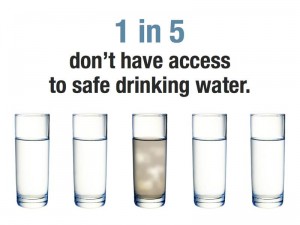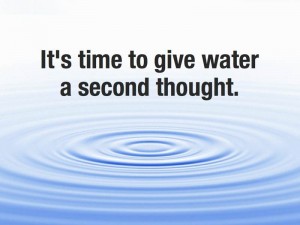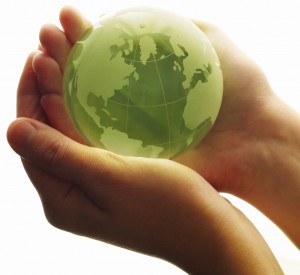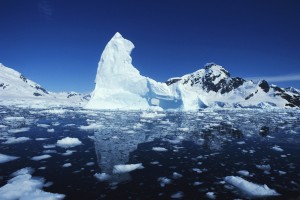How often do you think about your use of water? Serious question, one which some of our readers will undoubtedly say all the time. Those living in areas of almost constant drought will have water as a very pressing issue on their mind, most of the time.
But then there are some of us, who might not really consider it as much. The authorities are in control of it right? If they aren’t, strictly regulated private companies are, so we are good, yeah?
Water is a resource which we all need, and cannot possibly live without. Whenever scientists are looking for life on other planets, one of the first things they try to work out, is was there ever water on this planet, and is there now? Why? As water is a key component to life as we know it.
Sadly, water is a very scarce resource, and according to National Geographic, a mere 0.007% of our planets water is drinkable. That’s right, just 0.007%. The rest is in the oceans, and the majority of the 3% of freshwater left, is locked up in ice, which ultimately melts into the sea.
0.007%
As I am sure you heard, in October last year, (2011) the earth’s population reached 7 billion, and is still growing. That 0.007% figure is not getting any bigger, but the population is – rapidly. That is why, currently, on the earth:
 That’s right, 1 in 5 people living on our planet does not have access to a safe supply of water which they can drink. If the population is 10 billion by 2050, that statistic could increase to 2 in 5, or maybe even 3 in 5.
That’s right, 1 in 5 people living on our planet does not have access to a safe supply of water which they can drink. If the population is 10 billion by 2050, that statistic could increase to 2 in 5, or maybe even 3 in 5.
In the 20th century, the global population tripled, the use of water sextupled – grew by six times. Los Angeles can support around about 1 million people with its water supply. It currently has a population of 4 million – see a problem? Elsewhere in the USA, in less than 5 years, Central Florida could potentially run out of water.
Drought
Some places in the world are naturally dry, and frequently suffer drought. Some places are naturally wet, and frequently suffer flooding.
The thing is, most of us probably don’t think we are in drought right? Say you live in the UK, like me, you probably think our water supplies are fine yes? Recently in the news we have been notified most of the UK is in drought, but are we really? Well the answer is yes, and many other areas of the world might be too, you might not realise it, but where you live could be. Check out this drought monitor, to see if your area is. You can toggle the time period on the left hand side, as you may be in long-term drought, but not short-term and vice versa.
Look after it
We all need to learn to look after our water better. We are not getting any more, so we need to be more careful with what we have. Our lives quite literally depend upon it.
My question to you is how much water do you use? According to Thames Water we use around 8 litres every time we flush the toilet. Brushing our teeth with the tap off uses 1 litre, whilst brushing them with the tap on (assuming a 2 minute brush) uses 12 litres. Our dishwashers typically use 20 litres, whilst our washing machines thirst for a giant 45 litres.
Hose pipes
Everyone always moans when we go into a hosepipe ban. What is the point? Surely I use just as much water as other activities, so why ban that? Well it doesn’t. One toilet flush is around 8 litres, but one hour of hosepipe use is 540 litres. That’s right, 540!
Lets assume you are washing your car. Say it takes you 20 minutes. With a bucket, you would typically use 10 litres – 2/3 buckets. What about with a hosepipe? Well, you would use 18 times as much water, a staggering 180 litres!
More refugees (25 million) were displaced by contaminated rivers in 2008 than were forced to flee from war zones. I don’t have more recent figures, but I would assume the figure would be much greater. The UN state that around every 15 seconds, as child dies from a water-related disease – poor sanitation, which 1 in 3 people on the planet suffer from.
 How can you save it?
How can you save it?
Depending upon how much you use, will determine how much water you could potentially save. Here are some great starting points:
- Turn the tap off when cleaning your teeth – you could save 11 litres
- Fill your kettle to the minimum you need, don’t fill it half full, or to the top if you are only making 1/2 drinks!
- Use a bucket to wash your car and save yourself 170 litres
- Don’t put your dishwasher or washing machine on until it is full – two washes uses twice as much water
- Don’t leave the tap running when washing up or cleaning vegetables
- Fix leaks – if you have one dripping tap, it could use a staggering 3,120 litres a year!
- Take a water test, to see how efficiently you are using your water
Saving water is very important, and it can save you money.
 Please, think about your water usage, as it is something that affects us all.
Please, think about your water usage, as it is something that affects us all.


